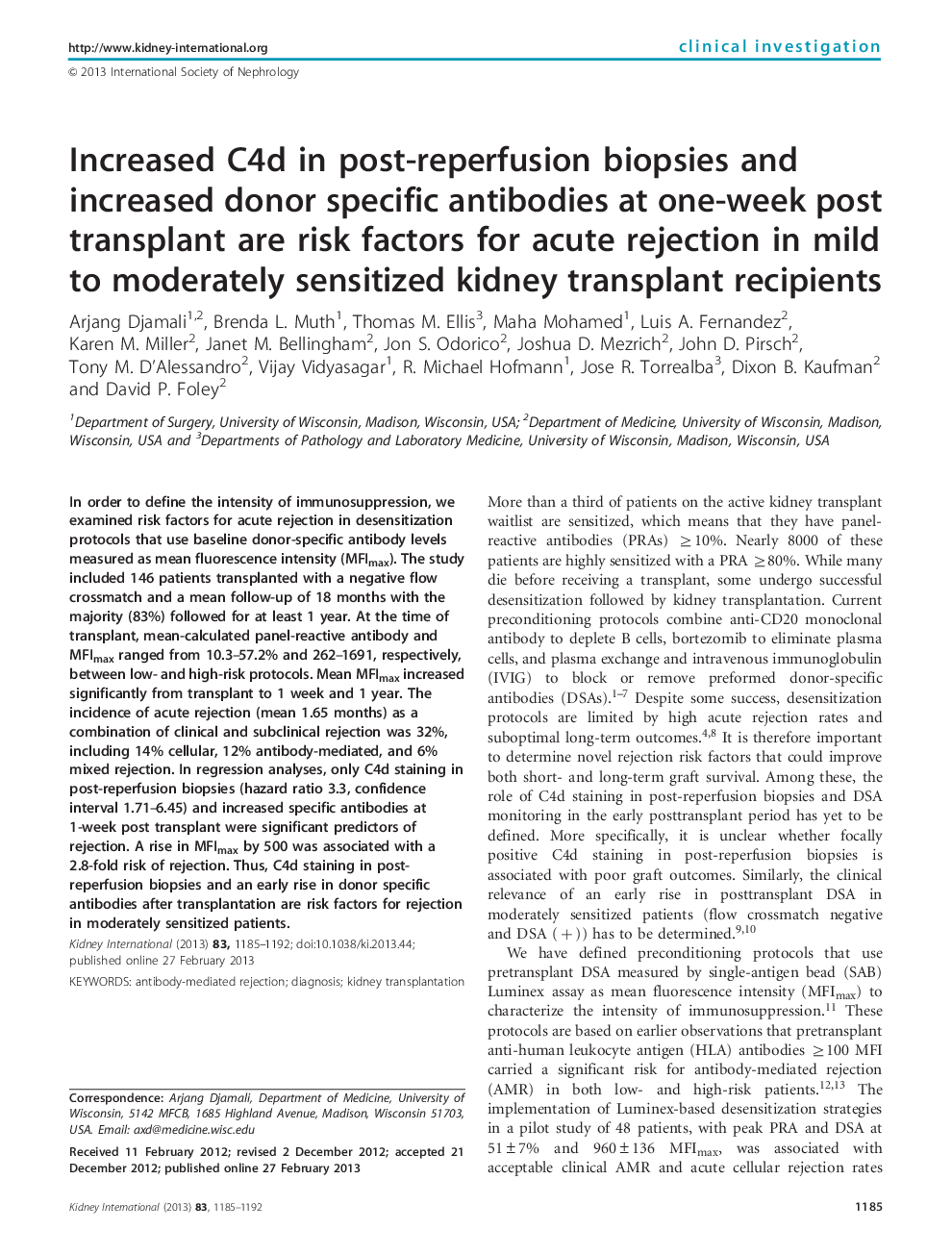| Article ID | Journal | Published Year | Pages | File Type |
|---|---|---|---|---|
| 6163782 | Kidney International | 2013 | 8 Pages |
Abstract
In order to define the intensity of immunosuppression, we examined risk factors for acute rejection in desensitization protocols that use baseline donor-specific antibody levels measured as mean fluorescence intensity (MFImax). The study included 146 patients transplanted with a negative flow crossmatch and a mean follow-up of 18 months with the majority (83%) followed for at least 1 year. At the time of transplant, mean-calculated panel-reactive antibody and MFImax ranged from 10.3-57.2% and 262-1691, respectively, between low- and high-risk protocols. Mean MFImax increased significantly from transplant to 1 week and 1 year. The incidence of acute rejection (mean 1.65 months) as a combination of clinical and subclinical rejection was 32%, including 14% cellular, 12% antibody-mediated, and 6% mixed rejection. In regression analyses, only C4d staining in post-reperfusion biopsies (hazard ratio 3.3, confidence interval 1.71-6.45) and increased specific antibodies at 1-week post transplant were significant predictors of rejection. A rise in MFImax by 500 was associated with a 2.8-fold risk of rejection. Thus, C4d staining in post-reperfusion biopsies and an early rise in donor specific antibodies after transplantation are risk factors for rejection in moderately sensitized patients.
Related Topics
Health Sciences
Medicine and Dentistry
Nephrology
Authors
Arjang Djamali, Brenda L. Muth, Thomas M. Ellis, Maha Mohamed, Luis A. Fernandez, Karen M. Miller, Janet M. Bellingham, Jon S. Odorico, Joshua D. Mezrich, John D. Pirsch, Tony M. D'Alessandro, Vijay Vidyasagar, R. Michael Hofmann, Jose R. Torrealba,
